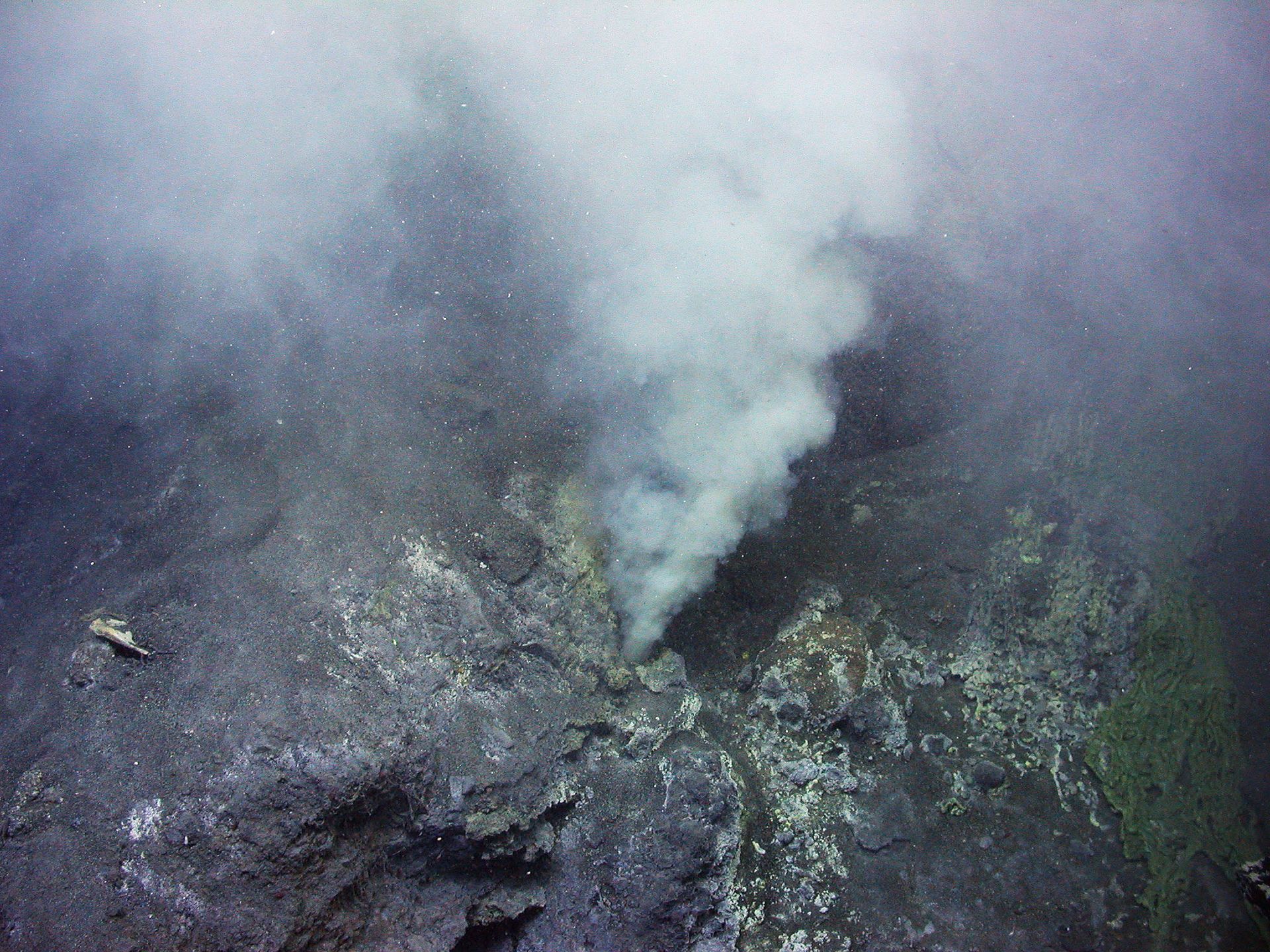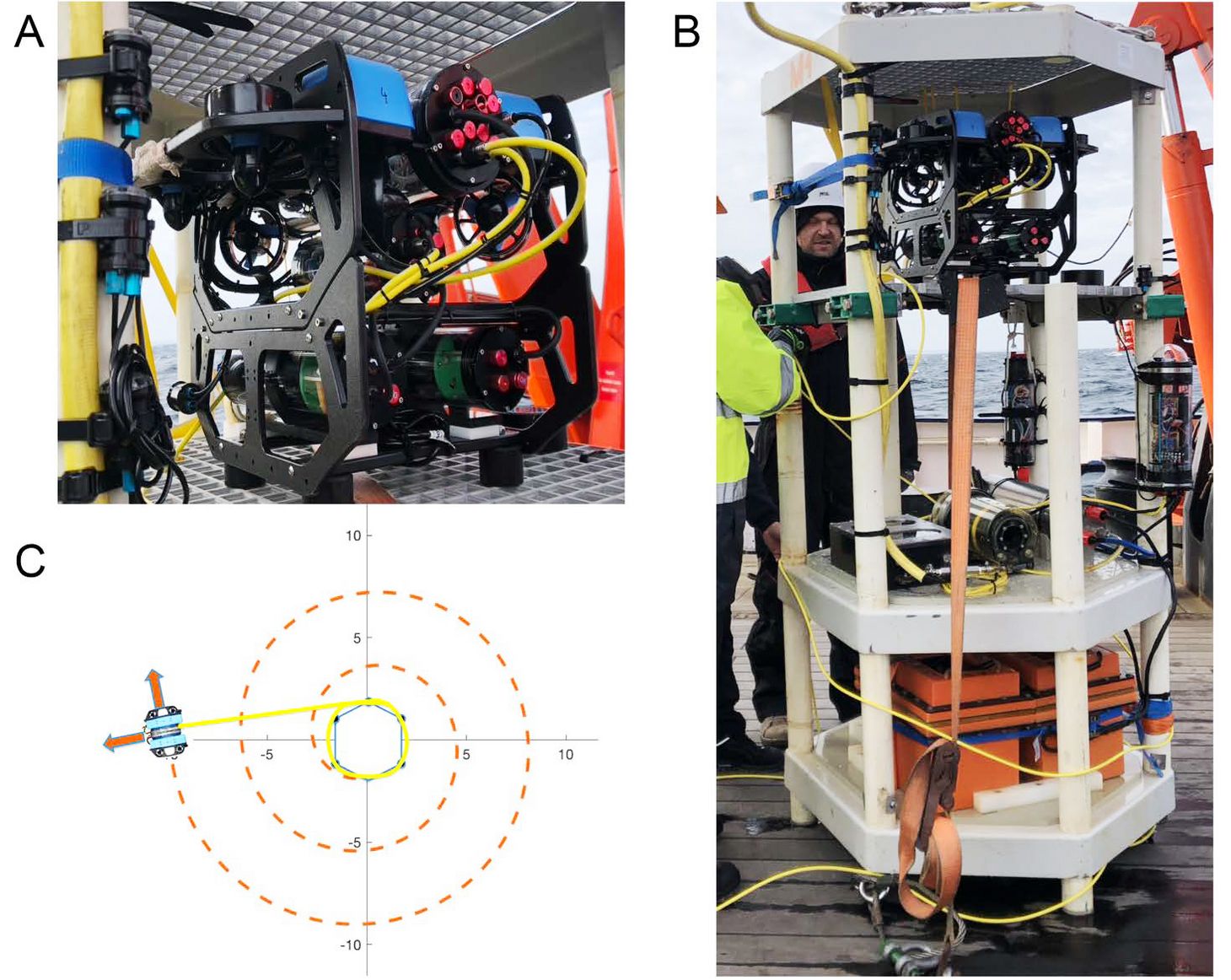
A carbon sink in the deep sea
Seas and oceans are natural carbon sinks: they absorb by far the most greenhouse gases in the world and thus help to maintain a healthy climate. But would it be possible to develop new technologies to increase this capacity even further? Could CO2 be captured from the atmosphere and stored in the seabed? These are the main questions being addressed by the first research mission of the German Marine Research Alliance. One of the partners in the project is the Innovation Center for Deep-Sea Environmental Monitoring at MARUM in Bremen – which receives funding from the Werner Siemens Foundation.
On its website, the German Marine Research Alliance (DAM) writes, “Seas and oceans play a central role in global climate processes. They are among the most important ecosystems on earth and influence the lives of millions of people.” Founded in 2019 by the northern German states of Bremen, Hamburg, Mecklenburg-Western Pomerania, Lower Saxony and Schleswig-Holstein, the Alliance is one of the world’s largest marine research collaborations.
German Marine Research Alliance
The (marine) scientists at DAM are seeking research-based solutions to major challenges facing our society – including climate change. To protect and ensure sustainable use of the world’s coasts, seas and oceans, the scientists from different disciplines are joining forces to form what they call “research missions”.
Climate VIPs
In effect, an ocean functions like a gigantic reservoir for thermal energy and carbon. Not only do phytoplankton, algae and seagrasses convert carbon dioxide into organic compounds during photosynthesis, there is constant interaction between the ocean and the atmosphere: the ocean waters naturally remove CO2 from the air and transform up to ninety-one percent into hydrogen carbonate. The colder the water, the better for CO2 absorption. However, the converse is also true: as waters rise in temperature, their capacity to process carbon dioxide diminishes.
These natural transformation processes make the oceans the single-most important factor in maintaining a healthy climate balance. Now, however, with the advent of global warming, the question arises as to whether even more carbon dioxide could be stored in the oceans. And this question is the focus of the DAM research mission “Marine carbon sinks in decarbonisation pathways”, or CDRmare for short. Werner Siemens Foundation Endowed Chair Ralf Bachmayer – head of the Innovation Center for Deep-Sea Environmental Monitoring at MARUM in Bremen – and his team number among the roughly 200 researchers participating in the project.

Carbon storage beneath the seabed
The researchers believe that industrial greenhouse gas emissions could be drastically reduced if CO2 were captured at the source and then sequestered in the geological subsurface below the ocean floor. In Europe, the most promising locations are sandstone formations in the lower substrata of the North Sea and the submarine basalt rock layers off the coast of Norway and surrounding Iceland.
The CDRmare researchers are now exploring various methods of carbon capture and marine storage and examining them in terms of their overall potential and risks as well as other advantages and disadvantages. The information gained will serve decision-makers in politics and society.
Benefits and drawbacks of marine carbon sinks
Answers are needed to the following questions: to what degree can the ocean play a major, and also sustainable, role in capturing and sequestering carbon dioxide from the atmosphere, and what risks do marine carbon sinks pose to the ocean’s environment, to the earth’s systems and to society?
Less is not enough
The researchers are now probing technological possibilities to combat climate change. Indeed, it has become clear that the Paris Agreement goal of limiting the rise in global temperatures to well below two degrees Celsius cannot be reached only by reducing the amount of carbon dioxide emitted – not even if, starting today, absolutely no more greenhouse gases were released. There’s already simply too much carbon dioxide in the atmosphere. Werner Siemens Foundation Endowed Chair Ralf Bachmayer explains, “The only way to keep global warming under two degrees Celsius is through so-called negative emission technologies.” This means that some carbon dioxide emissions must be filtered out of the air and stored underground.
Monitoring the seabed and detecting leaks
Within the DAM research mission, the Innovation Center for Deep-Sea Environmental Monitoring at MARUM in Bremen is responsible for monitoring the carbon sinks in the seabed. Bachmayer and his team plan to develop a technical control system to assess how effective the carbon storage system is and to detect leaks.
For this work, the MARUM scientists can build on their previous research on deep-sea environmental monitoring, also financed by the Werner Siemens Foundation. Their monitoring strategy works with a so-called lander – a shelf-like structure equipped with sensors – that is placed on the seabed (Figure C, centre). An underwater monitoring vehicle (a miniature ROV) then moves around the lander in a spiral formation, scanning the seabed for carbon dioxide leaks. After conducting the first small-scale tests in February 2022, the team are now working on refining the monitoring system.
![[Translate to English:] Benedikt Oeschger studiert Agrarwissenschaften an der ETH Zürich – und hat von der Schweizerischen Studienstiftung ein Werner Siemens-Fellowship zugesprochen erhalten.](/fileadmin/_processed_/c/4/csm_01-WSS-Studienstiftung-Oeschger_a040db0739.jpg)
![[Translate to English:] Die am Universitäts-Kinderspital Zürich entwickelte PV-Skin ist der weltweit erste Hautersatz, der vier verschiedene Zelltypen der menschlichen Haut enthält.](/fileadmin/_processed_/9/b/csm_01-Kunsthaut-014_S1A9948_2103562ec2.jpg)
![[Translate to English:] Die Geobiologin Cara Magnabosco sucht im BedrettoLab nach Mikroorganismen, die tief unter der Erdoberfläche leben. Sie könnten Hinweise darauf geben, wie Leben entstehen konnte.](/fileadmin/_processed_/1/c/csm_01-WSS-NEWS-Bedretto_DSC8324_c8ea4a52fd.jpg)